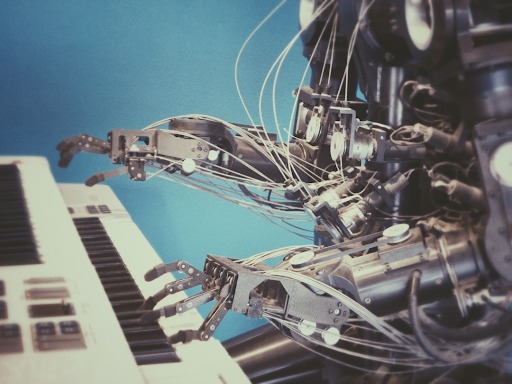That means web designers and entrepreneurs must be at the forefront of every technological advancement in design, or they will be left behind in the dust. Artificial intelligence and automation are no buzzwords; indeed, they are real disruptive tools in the future of web design. In this blog, we’ll dive deep into how these technologies rewrite web design and provide insights for professionals who would like to leverage them for competitive advantage.
Unveiling the Role of AI in Web Design
Artificial intelligence (AI) is no longer a science fiction subject but a real thing that forms part of our daily lives and greatly influences web design. AI can analyze user data, develop adaptive designs, and even forecast trends. It is one of those game-changing options in the field of web design. By integrating AI, designers will be able to develop custom websites with attractive features that are highly functional and responsive to users’ needs.
AI seamlessly sifts through huge user data in this process. Algorithms identify patterns and preferences upon which designers can comfortably have their creations to meet specific user expectations. This approach enhances satisfaction and boosts engagement levels, thereby giving the business an edge over its competitors in the market.
Another fabulous development involves AI’s ability to predict user behavior. By understanding users and how they use a website, AI empowers a designer to make informed decisions, taking everything into consideration from the user’s perspective to ensure that visitors find what they are looking for as quickly and efficiently as possible.
Personalized Design Experiences Through AI
One size no longer fits all in web design. The key is personalization, and AI can deliver experiences tailored to the resonance of individual users. By analyzing user behavior, AI dynamically readjusts website content and layout to suit personal preferences, creating a unique experience for every visitor.
Imagine seeing a website that changed its theme, color, or even content right before one’s eyes, simply based on one’s past behavior or preference. AI makes this possible, learning something new each time there is an interaction and adapting constantly to make a custom experience that keeps them wanting more.
Increased personalization improves user satisfaction and creates brand loyalty. When users feel like their thoughts are being heard and that they are being treated with value, they will more than likely develop a strong rapport with the brand, as depicted by an increase in customer retention and advocacy.
The Impact of AI on User Experience
The hub of web design lies in the user experience. AI refines this particular aspect like never before. This technology will enable designers to build more intuitive interfaces that know what users may want and guide them smoothly. User satisfaction and on-site time will increase correspondingly.
AI chatbots find their way to every website, providing instant support and guiding users. Virtual assistants are always up and running, providing real-time assistance and enhancing user experience. They can also answer simple FAQs and complicated troubleshooting queries, saving human resources for more strategic work.
Another aspect of AI that would support UX is predictive analytics. By understanding the patterns and trends from both historical data and current user interactions, AI can predict areas that are likely to frustrate users and proactively fix these pain points. This proactive approach minimizes friction and maximizes user satisfaction, setting a new bar for website performance.
Automation of Content Generation for Efficiency
Creating new and engaging content is always a challenge for web designers and entrepreneurs. AI and automation tools make this process much easier, freeing up a great deal of time and resources for other uses. Quality content produced through these tools can resonate with audiences and help businesses continue consistently churning out new content.
AI content generation tools can produce everything from simple blog posts to complex product descriptions. They analyze the existing content and find inspiration from what succeeded as creative and relevant material that would keep their audience intact.
Automation also plays an important role in content management, allowing businesses to schedule posts and updates to maintain periodic information flows crucial to audience engagement. This visibility is critical for creating brand authority and developing trust in a competitive digital space.
Leveraging Machine Learning in Design Optimization
A sub-domain of AI, machine learning is changing the face of web design when it comes to optimization. Machine learning algorithms continuously learn and fine-tune design elements to appeal to user preferences and industry trends.
Some of the key benefits that design receives from machine learning are that it conducts A/B testing on a large scale. Considering how users respond to the different alternatives of design elements, machine learning picks out the most effective ones and seamlessly implements them. This makes the design not only good-looking but functional, too.
Another strong advantage is predictive design, which uses machine learning to anticipate design trends and user preferences. With foresight like this, designers can stay ahead of the curve and create modern websites that stir and enchant audiences.
The Intersection of AI and Design Creativity
Whereas automation and AI bring much value to the table, many believe that they stifle creativity. In fact, the opposite is true: Such technology constitutes an important ally to designers since the more mundane tasks get offloaded, the more such insights become valued.
AI can help designers suggest design elements and layouts based on successful patterns. The collaboration between human creativity and AI insights leads to innovative designs that will keep users engaged. This allows designers to focus their energy on exploring new ideas and pushing the boundaries of creativity.
Besides, AI offers rapid prototyping, in which designers can test several ideas fast and efficiently. Such iteration allows experimentation and innovation to create unique designs that will distinguish a brand from its competitors.
AI for Responsive Web Design
Responsive web design has become key in today’s world of multi-devices, and it will continue to be perfected with the help of AI. Consequently, by understanding user behavior across devices, AI could optimize design elements so they could work perfectly on any screen size.
AI-powered analytics automatically show designers how users interact with their sites on different devices. Then, using that information, designers can make design adjustments that assure better usability and performance across the board.
Furthermore, AI allows real-time adaptation- the design elements change automatically according to the device specification and user preference. This dynamic, responsive design makes websites more appealing and easier to use, thus ensuring higher satisfaction and more users.
AI-Powered Tools for Enhanced Web Design
The development of tools with artificial intelligence has changed the perspective of web design by offering designers many resources for better work. From automated design assistants to intelligent analytics platforms, these tools ease processes and elevate design quality.
AI-powered design assistants can create designs, propose layouts, and even completely create website templates. This tool speeds up the design process and lets the designer concentrate more on customizing and refining the design for particular client needs.
Intelligent analytics platforms provide insight into user behavior, allowing designers to make truly informed design decisions. Better still, by knowing what users want and where they get frustrated, designers can optimize their creations for maximum impact and engagement.
How Vancouver Businesses Can Benefit from AI in Web Design
In this respect, integrating AI and automation into a web design strategy develops a certain level of competitiveness for Vancouver entrepreneurs. Using them, local businesses will be able to create visually stunning, highly functional, user-oriented websites.
AI-powered personalization has special value for Vancouver businesses because it can help treat each customer with unique preferences. It enables businesses to provide experiences tailored to reinforce relationships and promise brand loyalty in a competitive market.
Automation also clears the path for smoother content creation and management, allowing businesses in Vancouver to generate a continued online presence. This efficiency allows them to pay more attention to growth and innovation, ensuring continuous success in the digital landscape.
Operating Challenges and Ethical Considerations of AI
While AI and automation bring multiple benefits, they also present several challenges and ethical issues that the designer and entrepreneur must respond to. Ensuring data privacy and addressing algorithmic biases are all part of the minefield of issues one should take responsibility for when integrating AI.
Data privacy remains a critical concern because AI applications must be fed voluminous amounts of end-user data to operate effectively. Designers need to ensure data security and transparency to make users aware of how their data is used and protected.
Another challenge is algorithmic bias, the tendency of AI systems to perpetuate existing biases within data. To address this, designers will continuously check and refine AI algorithms to ensure the process results in fair and inclusive design.
Web Design Future with AI and Automation
AI and automation have their futures inextricably linked with web design, opening exciting avenues of innovation and growth. As these technologies keep advancing, they will enable designers to create more immersive and personalized experiences that captivate and engage users.
AI’s analytical and predictive capabilities mean designers will always be equipped to be ahead of the curve, creating innovative designs that set brands apart. Automation takes care of all the minute details and frees time for the designer to think more creatively and innovatively, pushing new boundaries in web design.
Ultimately, the integration of AI and automation in web design will yield extremely interactive and user-oriented websites that create value with the best user experience and business outcome. Conclusion AI and automation are the future of web design, offering strong tools to enhance creativity, efficiency, and user experience. To the Vancouver web designers and entrepreneurs, this is something they should not take for granted to remain competitive in the fast-changing digital world.
By applying AI-driven personalization, responsive design, and automation tools, businesses can build websites that would engage users and lead to brand loyalty. Though challenges and ethical considerations should be met, the potential benefits outweigh the risks.
The forecast of web design innovation can be unlimited since AI and automation are improving rapidly. If designers and entrepreneurs continue to be informed and nimble, they will unlock the technologies’ full potential to create riveting digital experiences and business outcomes.


